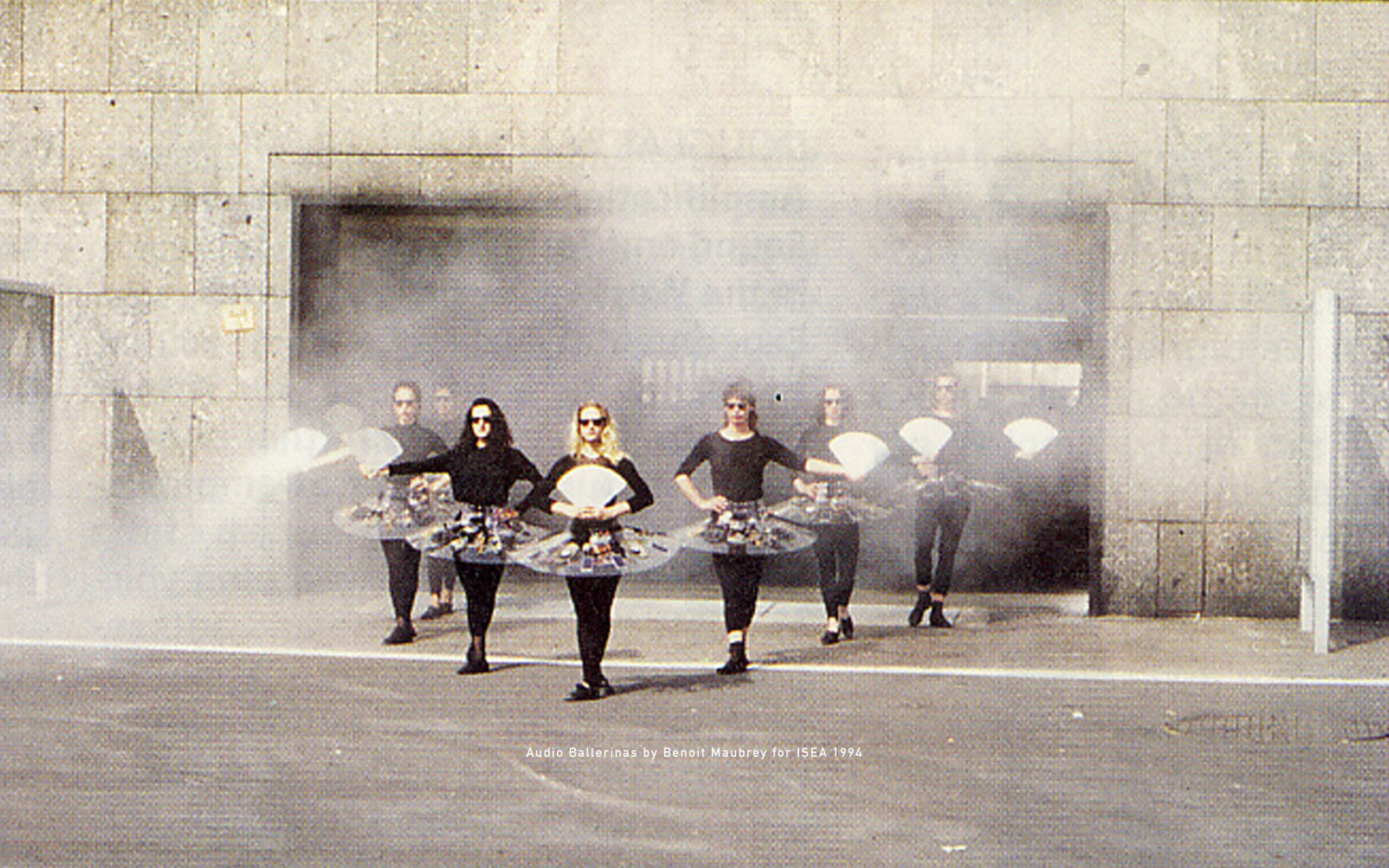Introduction
The idea of an ISEA conference (subsequently called symposium) was conceived by Theo Hesper who, alongside Wim van der Plas, began the necessary work to accomplish the project in 1986. The name for the first iteration of ISEA in 1988 was “FIRST International Symposium on Electronic Art” (FISEA). The initial aim was to start a network of organisations interested in the relationship between art and science. After the first two symposia in the Netherlands, it was sought after in Sydney (AU), Minneapolis (US), and Helsinki (FI), among others. As the history of the symposium unfolded, ISEA became a nomadic event, and this nomadic feature became one of its distinguishing characteristics.
History of ISEA
Text written by Wim van der Plas in 2013 and updated in 2023.
The Dutch Foundation for Creative Computer Applications (in Dutch: the SCCA) had been active in the 1980s introducing the use of computers into the curriculum of Dutch art schools. Later, because it was thought that the computer would be helpful in bringing about unique co-operations and unique new art forms, it was decided to broaden the vision wanting to bring together the different traditional art disciplines. This was a local initiative, and it was only later that the thought emerged to move from local to international arenas.
The trigger behind these activities was the notion that art and science should complement each other and that the gap between the two was a threat to art’s future. The field of electronic technology seemed the place where artists couldn’t do without the scientists, so, the idea to form co-operations with computer science was undisputable.
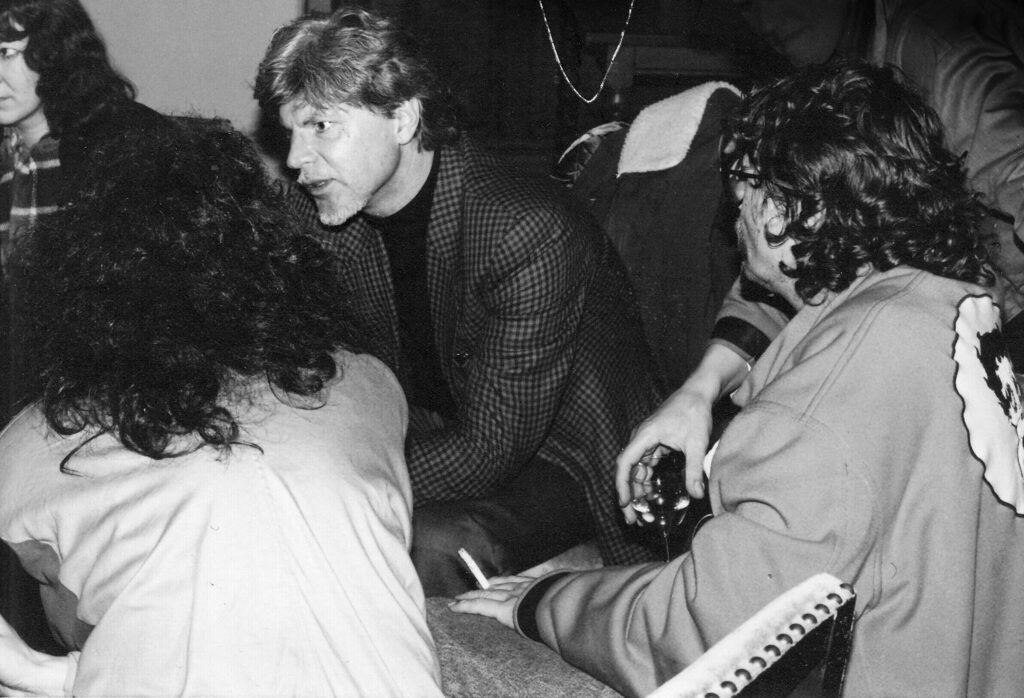
SISEA 1990. Theo Hesper (center), Emmy Okkerse, PR person SISEA left), Wim van der Plas (right). Foyer of Oosterpoort Cultural Centre, Groningen, 1990. Photo credit, G.J. Talens, © ISEA International Symposium Archives.
The founders of the SCCA, Theodor Hesper (computer scientist) and Wim van der Plas (sociologist), began work on an “International Conference on Electronic Art”, with the aim of it taking place in 1986. That date was too optimistic, and the starting year soon became 1988. Furthermore, the title ‘Conference’ was changed to ‘Symposium’ because that sounded better. The Rotterdam-based SCCA launched a co-operation with the Utrecht School of Arts and the symposium FISEA (First International Symposium on Electronic Art) took place in Utrecht in September 1988.
There were a few hundred people in attendance, mainly from Europe, the USA, and Australia. Many of them came either from the world of computer graphics or from the world of computer music. At this First ISEA attendees from different artistic disciplines learned about how they were experimenting with the same software (for example fractals), without previously knowing about each other’s work. Bear in mind that there was no public access to the Internet enabling instant international communication at that time; access to the internet was only possible in universities. I remember receiving my first email ever, handed out to me as a printed hard copy by our systems manager.
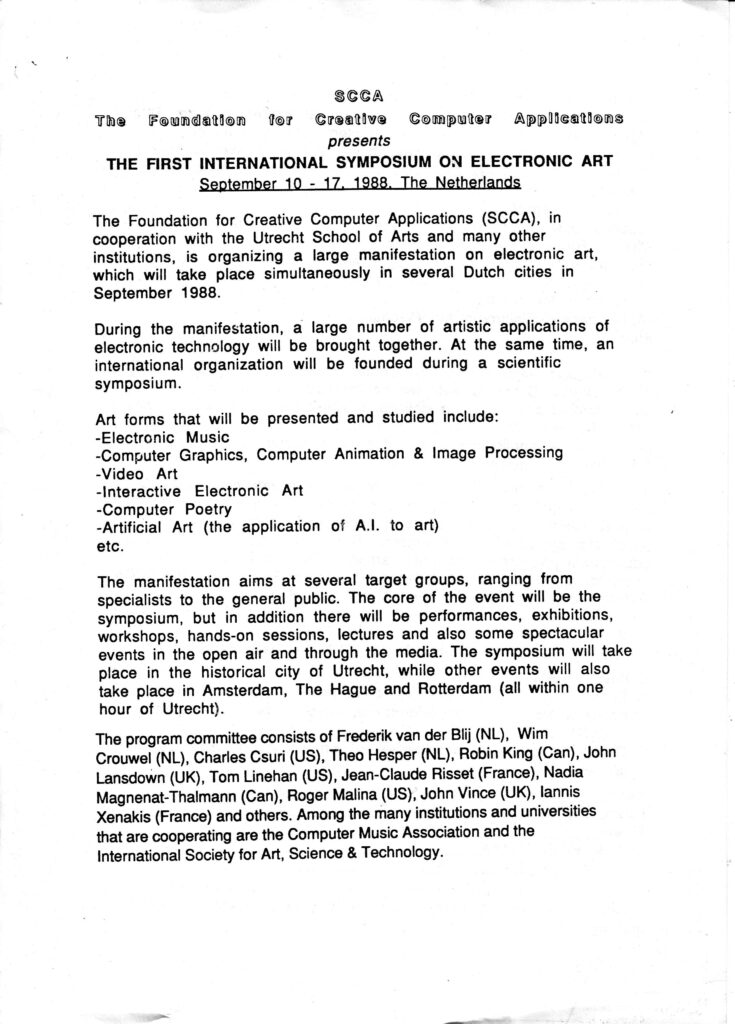
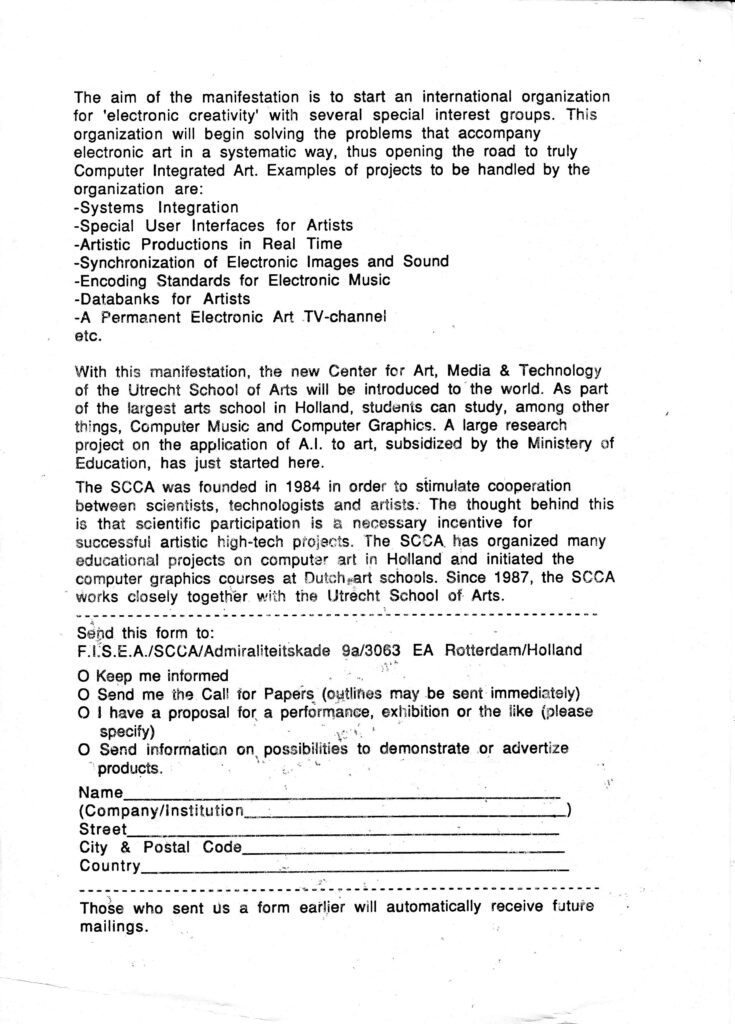
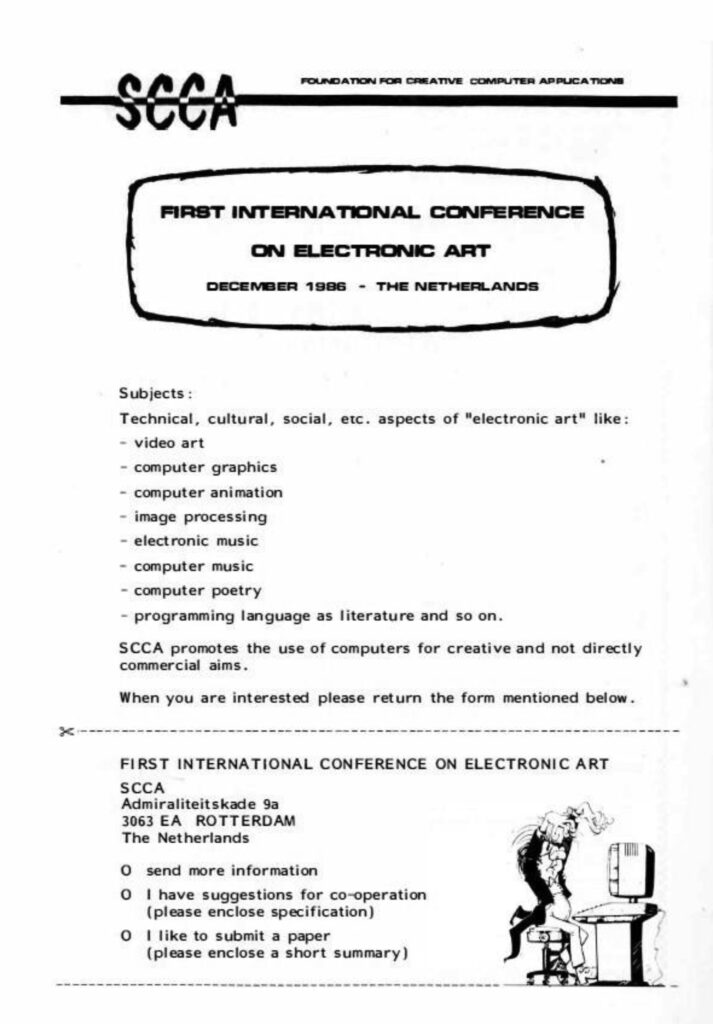
Our Program Committee for FISEA included pioneers like Charles Csuri, Herbert Franke, and Iannis Xenakis, among others. Speakers included other pioneers like Lillian Schwartz, and Harold Cohen. At night there were music performances and a special session in the Omnimax Theater in The Hague (a huge dome). A selection of the best papers appeared (as Symposium Proceedings) in a special issue of Leonardo Journal, titled “Electronic Art: Supplement Issue to Leonardo: Selected Proceedings”, ed.Wim van der Plas, May 1, (1990).
The most important event at the First ISEA was the General Meeting (since then, the GM has become a tradition at each ISEA), where it was decided to set the foundation for a ‘meta organisation’, called Inter-Society for the Electronic Arts. The aim was to further the cooperation between different institutes that existed in the fields of computer-generated or computer-aided art, with the aim of working on its progress in a systematic and structural way. Soon after this, it was also decided that ISEA should be a series of symposia and that a second symposium ought to be organised. The Utrecht Art School volunteered to take on the organisation of this project.
That, however, did not happen. After about half a year I was informed that the Utrecht Art School was not going to be able to pull it off and I was asked whether I could take over the organisation. At the time, I worked for the Art School Minerva, in Groningen, in the north of the Netherlands. Minerva and the Groningen Music Conservatory took it upon themselves to organise the second symposium (SISEA) in 1990, in Groningen. Among the highlights were several performances by the Australian artist Stelarc. Also, there was a substantial delegation from Australia who proposed to organise the third symposium (TISEA) in Sydney, in 1992.
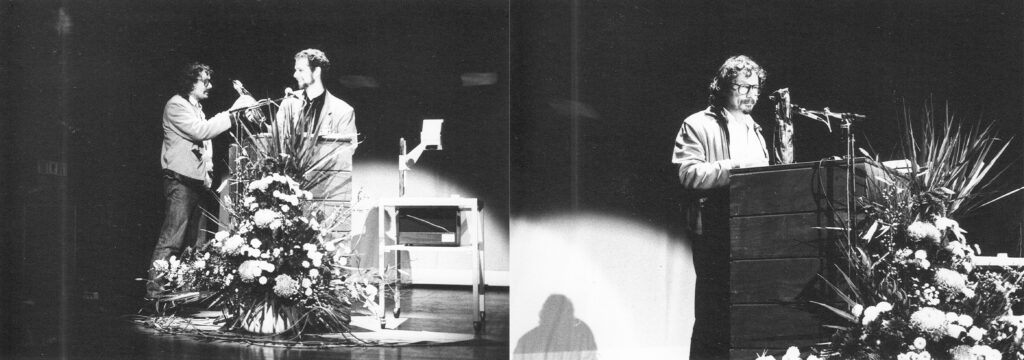
SISEA 1990. Wim van der Plas (managing director SISEA) receiving a bottle of wine from Michael Girard (SISEA Conference Chair) and presenting closing remarks. Oosterpoort Cultural Centre, Groningen, 1990. Photo credit, G.J. Talens, © ISEA International Symposium Archives.
The Sydney symposium was larger than the first two and the start of a truly nomadic existence for the ISEA symposia which counts with 28 iterations (in 2023) held in different world cities such as Minneapolis, Helsinki, Montreal, Rotterdam, Chicago, Liverpool/Manchester, Nagoya, Paris, Helsinki/Tallinn/Baltic Sea (actually part of that ISEA took place on a cruise ship), San Jose (USA), Singapore, Belfast, Ruhr Area (Germany), Istanbul, Albuquerque (USA), Sydney, Dubai (United Arab Emirates), Vancouver (Canada), Hong Kong, Manizales (Colombia), Durban (South Africa), Gwangju (South Korea), Montreal (first 100% remote symposium), Barcelona, and Paris (the latter in 2023).
The Inter-Society for the Electronic Arts existed as a membership organisation from 1990 until 2008, when it was decided that a membership organisation was not the most practical way of assuring the continued existence of the symposium because it was hard to find structural funding. So, after consulting with the membership it was decided to change its management structure and the association (which, by definition, has a board chosen by the membership) was converted to a ‘foundation’ called “ISEA International”, with its legal base still in the Netherlands, governed by a Board of Directors charged with coordinating the continued occurrence of each symposium and ensuring the quality of content, assisted by an Advisory Committee known as the IIAC (established in 2012), and a Head-Quarters Director charged with providing an administrative and academic base. HQ was based at Brighton University from 2009 to 2022, and currently at the University for the Creative Arts, both in the UK.
ISEA was conceived as an acronym for “Electronic Arts”, and maybe, nowadays, we could replace “electronic art’ for ‘emergent art’, as not all progress in science and technology has to do with computer science and electronics and, more precisely, we are seeing a fusion of biology and technology that is of much interest to artists and scholars. The main point is that if one is interested in increased cooperation between art and science, this is the field where those 2 major cultural disciplines need each other. Personally, I find much relief in listening to Stelarc (Stelarc.org), who has always kept an open eye for a future where biology and technology will be much more integrated, to the point of a ´revolution in evolution´ (as I like to call it) and invites us to embrace it, rather than fight it.
WvdP – March 19, 2013 – (updated February 2023)
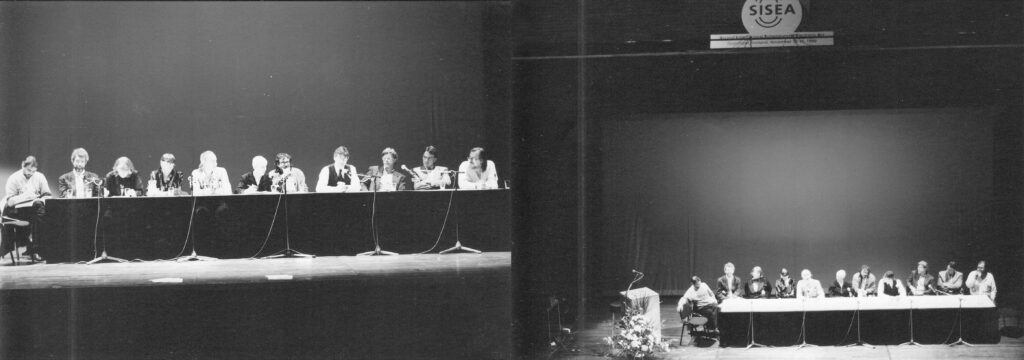
SISEA 1990. Panel on the launch of the Inter-Society for the Electronic Arts with (from left to right) Roger Malina (Leonardo/ISAST), Paul Brown (Fine Art Forum), Copper Giloth (SIGGRAPH), Christina Schoepf (Ars Electronica), Ken Gray (U of Anchorage), Virginia Barrat (ANAT), Wim van der Plas (ISEA), Seth Shostak (SETI, SISEA anchorman), Theo Hesper (ISEA), Craig Harris (Computer Music Association), Ray Lauzanna (Languages of Design). Oosterpoort Cultural Centre, Groningen, 1990. Photo credit, G.J. Talens, © ISEA International Symposium Archives.
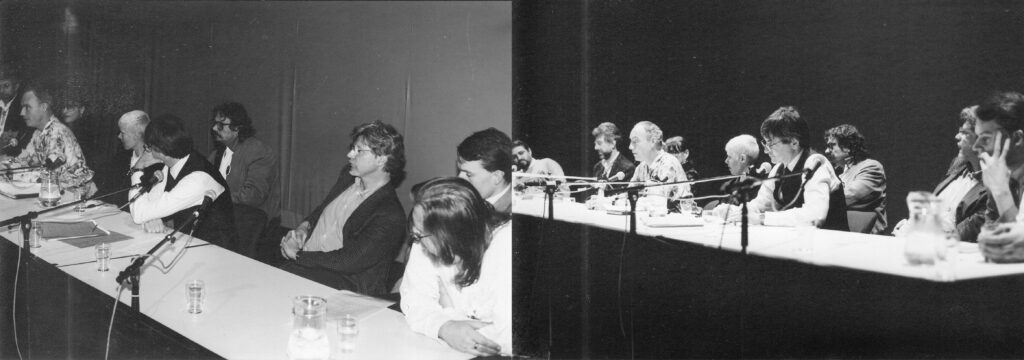
SISEA 1990. Panel on the launch of the Inter-Society for the Electronic Arts. See Image 1 (close ups). 1990. Photo credit, G.J. Talens, © ISEA International Symposium Archives.
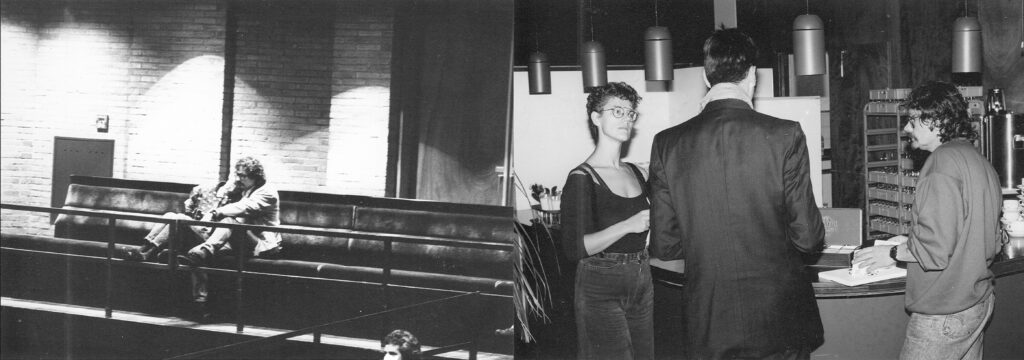
Wim van der Plas (managing director of SISEA) & Heidi van der Wal (head of SISEA secretariat), then married, at SISEA, Oosterpoort Cultural Centre, Groningen, 1990. Photo credit, G.J. Talens, © ISEA International Symposium Archives.
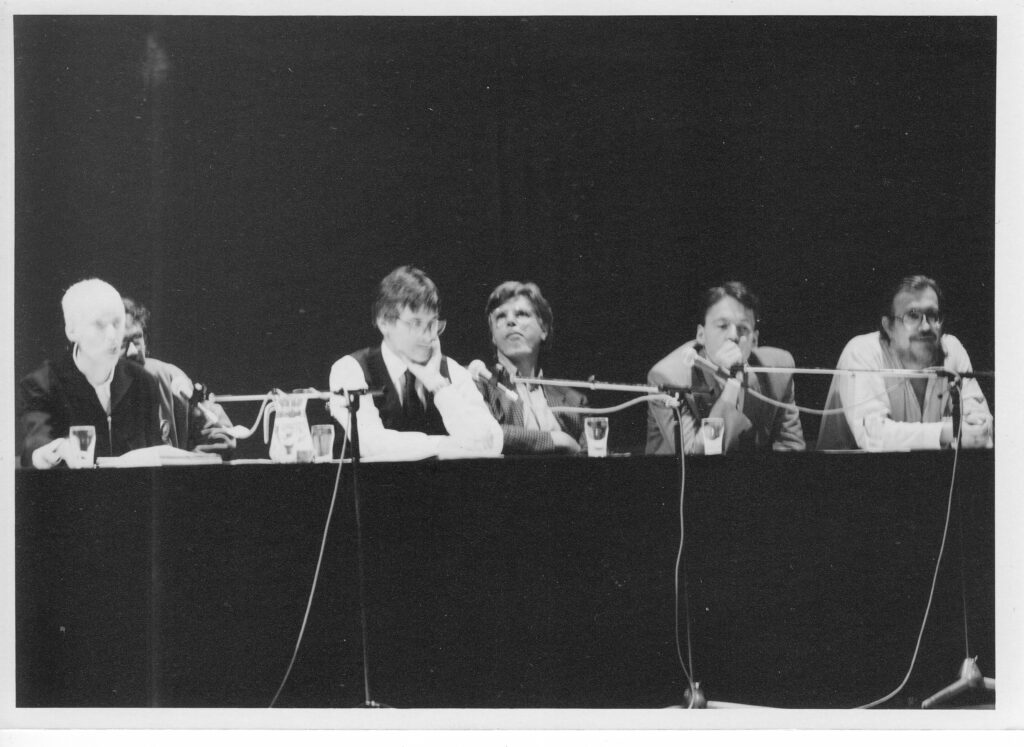
Virginia Barrat, Wim van der Plas, Seth Shostak, Theo Hesper, Craig Harris, Ray Lauzanna
Interview with Wim van der Plas on the occasion of the 30th birthday of ISEA
Interview, editing & production by Anne Nigten. Produced for and shown at the 24th International Symposium on Electronic Art (ISEA2018) in Durban, South Africa, 2018. © ISEA International Symposium Archives.
